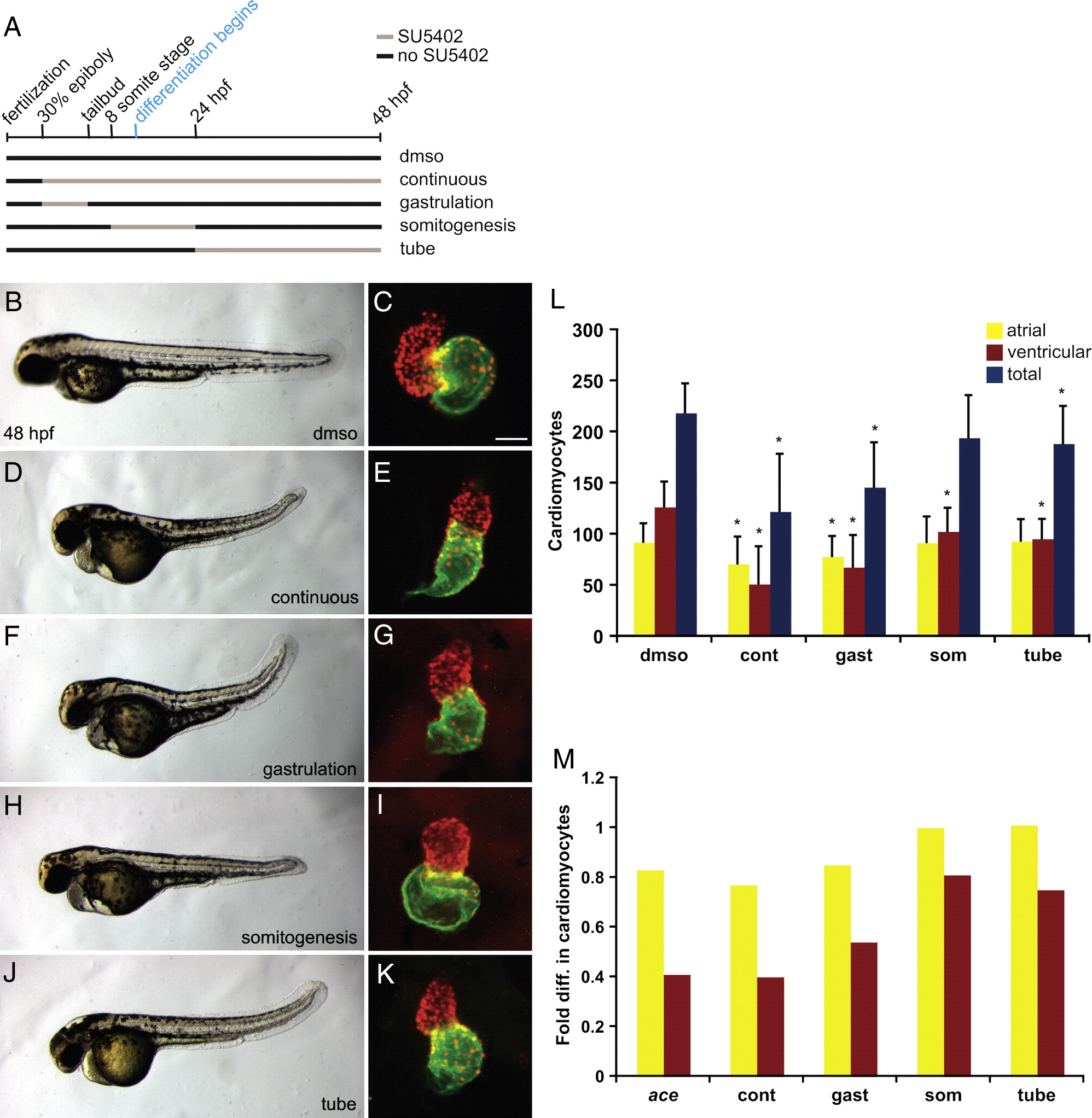Fig. 3 Transient reduction of FGF signaling leads to differential reduction of cardiomyocyte numbers. (A) Schematic depicts the transient periods of FGF signaling inhibition caused by addition and removal of SU5402. Black lines represent time intervals with normal FGF signaling, and tan lines represent intervals of SU5402 treatment. Control embryos were treated only with DMSO, “continuous” SU5402 treatment extended from 30% epiboly (3 hpf) until 48 hpf, “gastrulation” treatment began at 30% epiboly and ended at the tailbud stage (10 hpf), “somitogenesis” treatment began at the 8-somite stage (13 hpf) and ended at 24 hpf, and “tube” treatment extended from 24 hpf to 48 hpf. (B–K) Representative 48 hpf embryos, lateral views, exhibiting morphology resulting from each type of SU5402 treatment, coupled with respective frontal views of hearts in which immunofluorescence detects DsRed (red) in all cardiomyocyte nuclei and Amhc (green) in atrial cells, as in Fig. 1. Scale bar represents 50 μm; all images of hearts are shown at the same magnification. Embryos treated continuously or during gastrulation occasionally exhibited severe tail truncations characteristic of higher SU5402 concentrations (Griffin and Kimelman, 2003); severely truncated embryos were excluded from quantification of cardiomyocytes. The concentration of SU5402 used did not induce nonspecific apoptosis, as indicated by TUNEL (SRM and DY, unpublished results). (L) Quantification of cardiomyocytes at 48 hpf after each type of SU5402 treatment. Graph indicates mean and standard deviation for each data set; asterisks indicate statistically significant differences relative to DMSO-treated controls (p < 0.005, Student's t-test). Note that the total number of cardiomyocytes following somitogenesis treatment is also significantly different from the control number, although with a larger p value (p < 0.01). (M) Graph indicates fold difference in mean values relative to wild-type for ace mutant embryos and embryos treated with SU5402. n = 33 for DMSO, n = 8 for continuous treatment, n = 28 for gastrulation treatment, n = 28 for somitogenesis treatment, and n = 22 for tube treatment; see also Supplemental Table 3.
Reprinted from Developmental Biology, 321(2), Marques, S.R., Lee, Y., Poss, K.D., and Yelon, D., Reiterative roles for FGF signaling in the establishment of size and proportion of the zebrafish heart, 397-406, Copyright (2008) with permission from Elsevier. Full text @ Dev. Biol.

